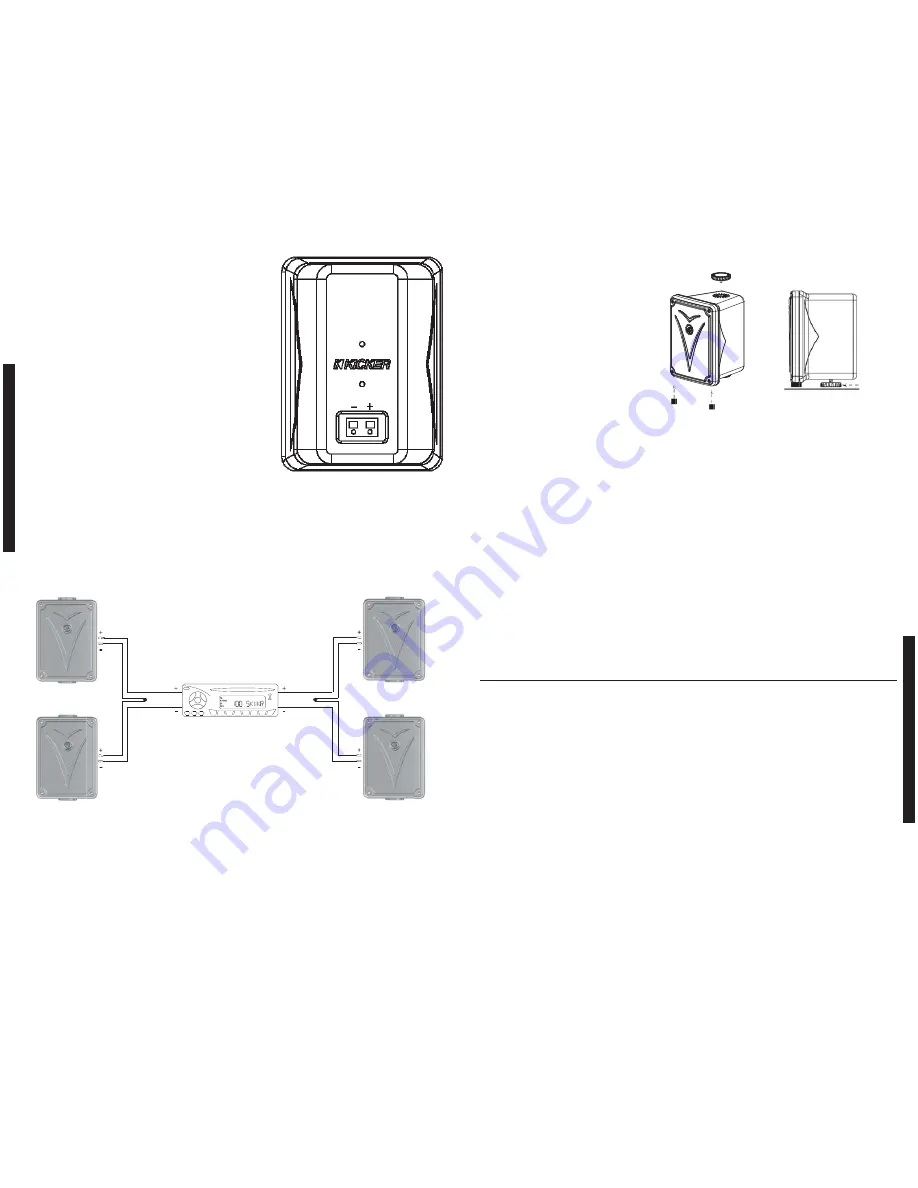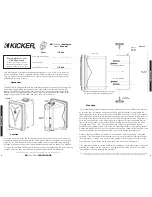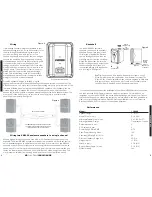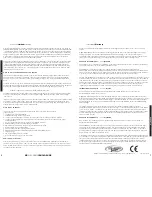
S
ou
r
c
e
U
nit
o
r
Amp
li
f
ier
T
w
o KB6
000
en
c
l
o
s
u
re
s
p
ea
k
ers
wire
d
in
series
t
o
a
single
ch
annel
p
r
oduc
e
an
eig
h
t
ohm
l
o
a
d
fo
r
t
h
e
Amp
li
f
ier
o
r
S
ou
r
c
e
U
nit
t
o d
ri
v
e
.
F
ig
u
re
4
Wiring
If pre-existing speaker wiring is not available in your
desired mounting location, it may be necessary to run
the wire through the wakeboarding tower, attic in
your home or along the wall in your dorm. The
speaker wire should be kept away from sharp edges
to avoid the possibility of getting pinched by moving
mechanisms and be out of the way of all party-goers.
If you must drill a hole to run the speaker wire
through any location, be careful not to drill into other
wiring or existing mechanisms. Any time a wire is run
through a hole, it is necessary to insert a rubber or
plastic grommet to protect the wire from damage.
Check your local building codes for the necessary
procedures and precautions for running low voltage
wiring in your home or indoor skatepark.
Once the speaker wiring job is finished, plug the
speaker wires securely into the positive and negative speaker terminals on the back of the
KB6000 enclosure. You may want to remove the mounting bracket to get a clear view of the
terminals. Maintain proper polarity between all KB6000 speakers, most speaker wires are
marked with a solid or dashed line on one of the two speaker wires. Use this solid or
dashed line for either positive or negative polarity throughout the entire speaker system. The
other end of these wires connect to your source unit or amplifier in a similar manner,
observing proper polarity. See Figure 3.
4
5
PERFORMANCE
KB
FULL-RANGE
ENCLOSURE
R
ear
v
iew
of
S
p
ea
k
er
T
er
m
inal
Wiring two
KB6000
enclosure speakers to a single channel
Modern high performance speakers have a lower DC Resistance than what used to be
available. The Kicker KB6000 speakers are rated at four ohms and work with any source
unit or amplifier designed to operate at a four ohm load. If you want to use two KB6000
speakers on each channel of your source unit or amplifier wire the speakers in series, as
shown above. This will improve the sound quality, lower the total harmonic distortion and
lessen the thermal load at the source unit or amplifier, as it will be an eight ohm load. This
may prevent an amplifier from shutting down, due to over-current protection circuitry.
INST
ALLA
TION
Pro Tip:
You are one Kicker Loaded-Subwoofer enclosure, one ZX
Mono-Amplifier and a few cables away from a slamm’in system! The
Kicker ZX line of mono-amplifiers make it easy to upgrade to solid bass
with your existing or stock source unit. Please ask your dealer about
the Kicker Comp, CompVR and L5 Subwoofer upgrades.
F
ig
u
re
3
If you have any questions about the installation of your Kicker KB6000 enclosure speakers,
see the Authorized Kicker Dealer where you made your purchase. For more advice on
installation, click on the SUPPORT tab on the Kicker homepage, www.kicker.com. Choose
the Technical Support tab, choose the subject you are interested in, and then download or
view the corresponding information. Please E-mail [email protected] or call Technical
Services (405) 624-8583 for specific or unanswered questions.
Model:
Speaker Design
Woofer Size, in (mm)
Midrange/Tweeter Size, in (mm)
Midrange/Tweeter Design
Rated Impedance, ohm
DC Resistance, ohm
Power Range, Watts RMS
Peak Power Handling, Watts
Sensitivity [SPLo], dB @ 1W, 1m
Effective Frequency Range, Hz
Height, in (mm)
Width, in (mm)
Bottom Mount Depth, in (mm)
Grilles included
Performance
KB
6000
2 - Way
6 1/2 (165)
2 x 5 (50.8 x 127)
Compression-Loaded
4
3
6-75
150
90
55-21k
11 (279)
8 1/8 (210)
8 1/8 (210)
Yes
B
ookshelf
The Kicker KB6000 enclosure
speakers can be used as bookshelf
speakers. Rubber feet are provided
for this type of application. Remove
the two locking knobs and then the
mounting bracket from the enclosure.
Attach the rubber feet, reattach the
bottom locking knob and adjust it until
the desired angle is achieved. We
recommend starting with the speaker
at a level angle. See Figure 5.
F
ig
u
re
5
Si
d
e
v
iew
R
e
mov
e
Lock
ing
K
n
ob
s
an
d
Mou
nting
B
ra
ck
et
R
eatta
ch
Bo
tt
om
Lock
ing
K
n
ob
t
o
Adju
st
A
ngle
of
S
p
ea
k
er
Rubb
er
F
eet






















